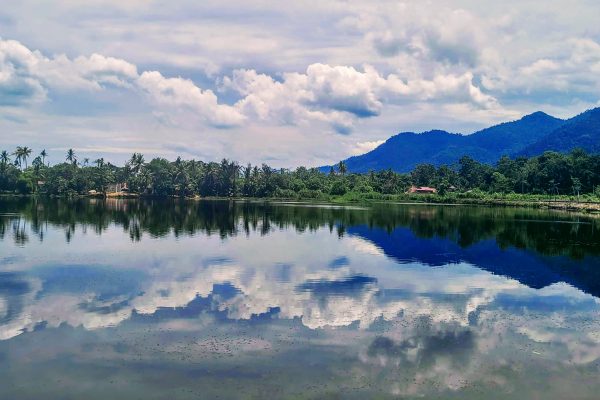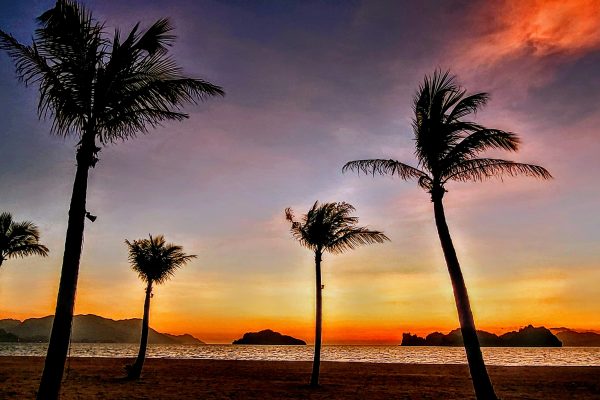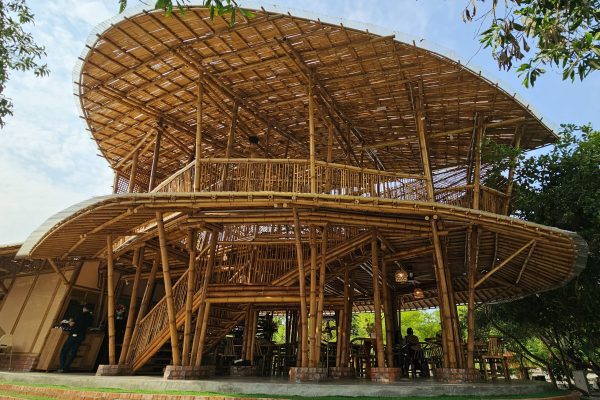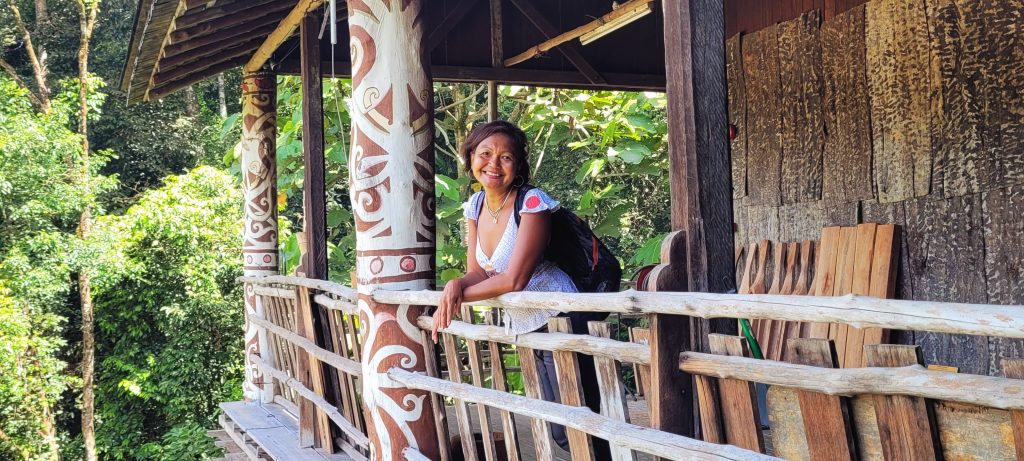
Borneo has been on my wish list since I was a little girl. Captivating stories of the headhunters, enchanting tribal cultures and rituals, the ancient tattoo, their longhouses, wild river expeditions and treks to dense forests has always been in my mind.
I’m proud to say that over the last 3 decades, I have fulfilled the call to my soul, making countless trips to Sarawak, exploring the beauty of its nature, charmed by the smiles, friendliness and warm hospitality of its people.
When you think of Sarawak, think of UNITY. Imagine how 27 ethnic tribes and 3 major races groups could live together in harmony, took pride in their rituals and culture and doing their best preserving the uniqueness of their ancestral treasure.
Sarawak, also known as The Land Of Hornbills is the largest state in Malaysia. It is packed with national parks, vast caves and archaeological sites that contribute to some of largest ecosystems in the world. It is located in Borneo, the third largest island in the world with the equator running across it.
Borneo is shared by 3 countries; Malaysia, Brunei and Indonesia.
BRIEF HISTORY
The history of Sarawak dates back in 1841 when an English soldier, James Brooke demanded for sovereignty as a reward after helping the Sultan of Brunei subdue the rebellions by gold miners and pirates in the area. James Brooke became the first White Rajah of Sarawak and created a new kingdom, not formally attached to the British Empire.
Under Brooke’s rule, the state grew in size through purchase and annexation. Network of small forts were built to repel pirates and tribal wars. The existing forts now remain as iconic attractions around the Sarawak capital, the city of Kuching.
The Japanese occupation in 1941 and World War 2 however ended Brooke’s reign as Sarawak was ceded to the British Empire.
Sarawak eventually came under the federation of Malaysia on the 16th September 1963 along with the state of Sabah.
EXPLORING BAU
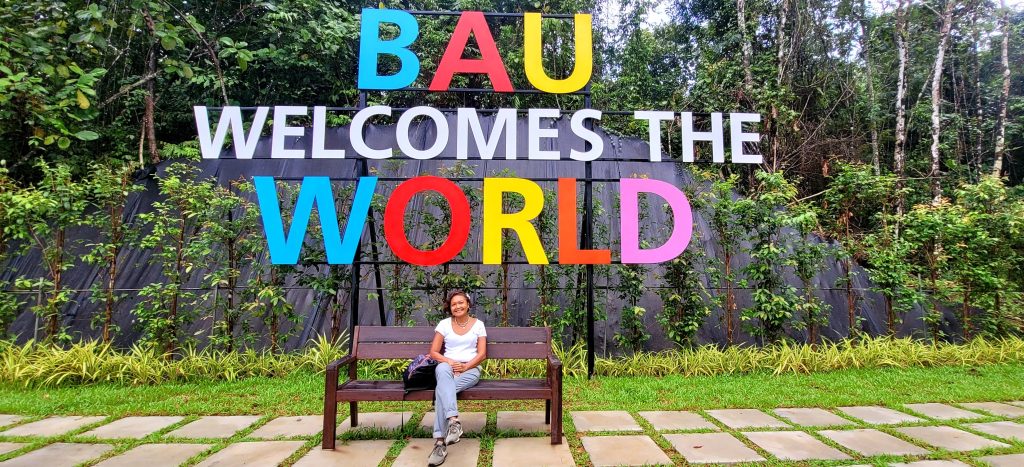
Bau, pronounced as ‘Ba-Wu’ once upon a time, was an important gold mining town discovered by Chinese miners from Indonesia. Bogged down with several tragic events, the mining eventually was bought over by The Borneo Company and finally ceased operations in 1996 after the Asian Financial Crisis.
Located approximately 35 km from the city of Kuching, Bau, rich in culture and history and is a gateway to ancient limestone caves. The cowboy town is now on the tourist map, known for its magnificent limestone caves, geopark and its unique culture and history.
FAIRY CAVE
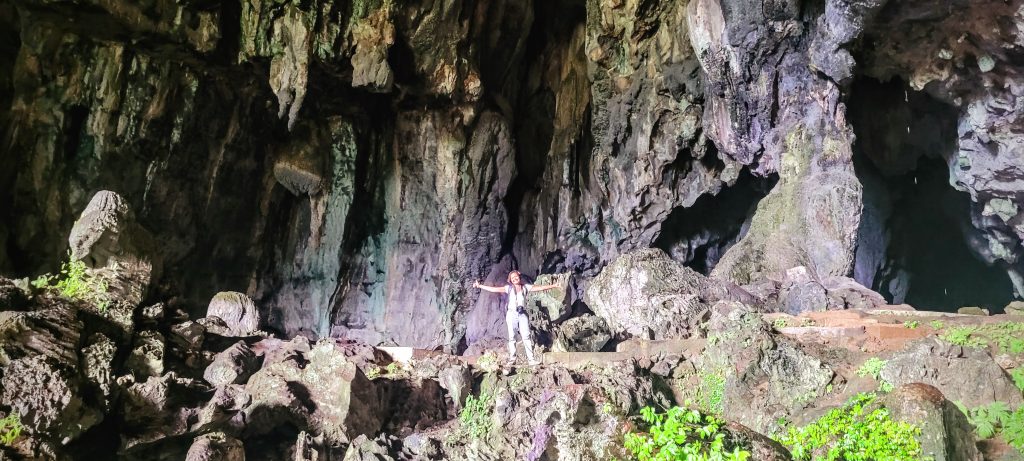
Fairy Cave, located merely an hour outside Kuching is an attraction not to be missed when visiting Kuching. The cave, 40 hectares in size, is renowned as Sarawak Delta Geopark.
Fairy Cave, known as Gua Pari in Malay, is dated back 170 millions years ago. It is named after its stalagmite formation that resembles Guan Yin, the Goddess of Mercy in Chinese culture.
Exploring this cave feels like invading through a Jurassic era. A veil of darkness cloaks the natural beauty of the cave. I took my time walking slowly, admiring the beauty of the spectacular indoor skyline, carved by nature. The formation of stalactites, stalagmite and the decorative columns on the floor totally blew my mind. At times I could feel a sprinkle of water from above as if blessing my visit. I ducked and bowed around the lower and narrow tunnels. This is certainly a mystical experience I shall never forget.
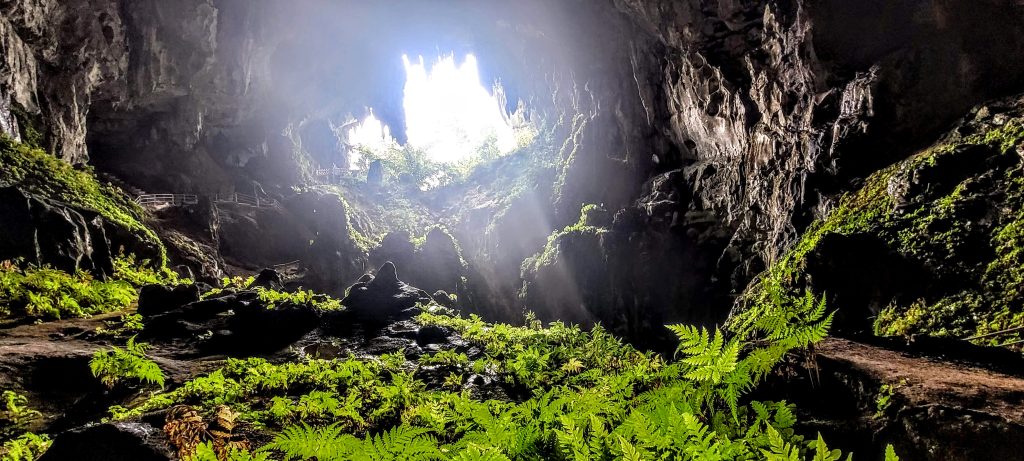
The plants grown at the entrance of the cave are all aligned and synchronised, as if they were landscaped by humans, all facing the sun, worshipping mother nature. It was so magical and is one of those occasions where pictures or videos can never do any justice.
I strongly suggest not to miss Fairy Cave on your next visit to Kuching. Best RM1 spent for the entrance fee!
Be sensible with clothing and footwear. A pair of shoes with a good grip is essential; some sections of the caves are slippery. A headlamp is necessary.
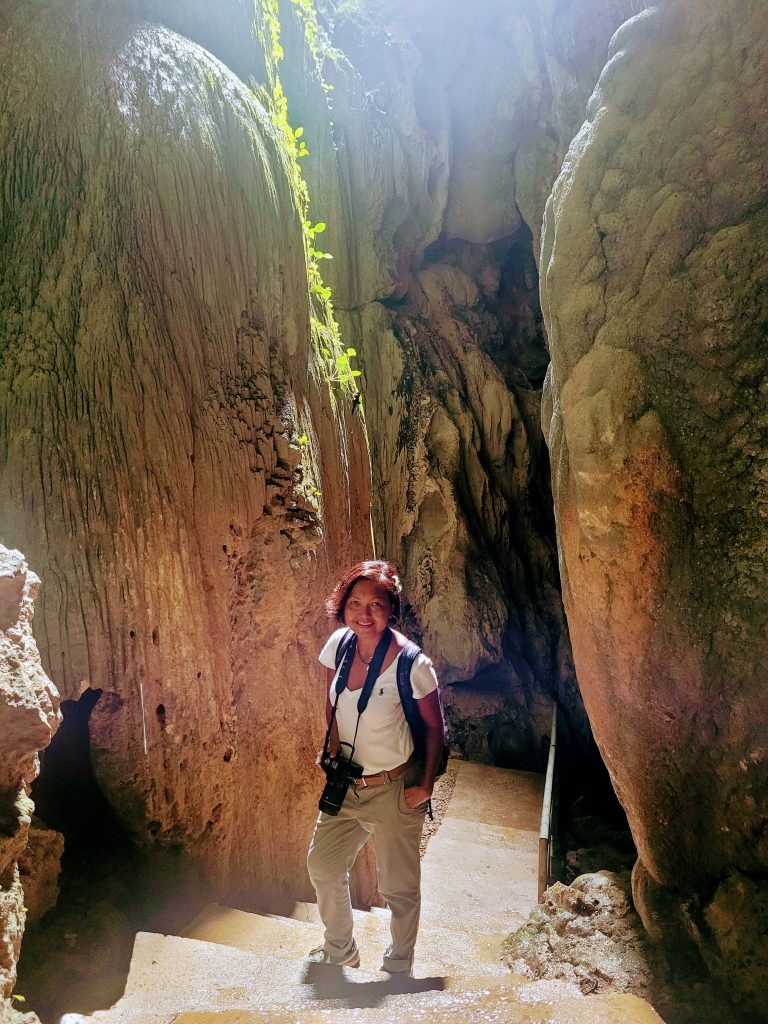
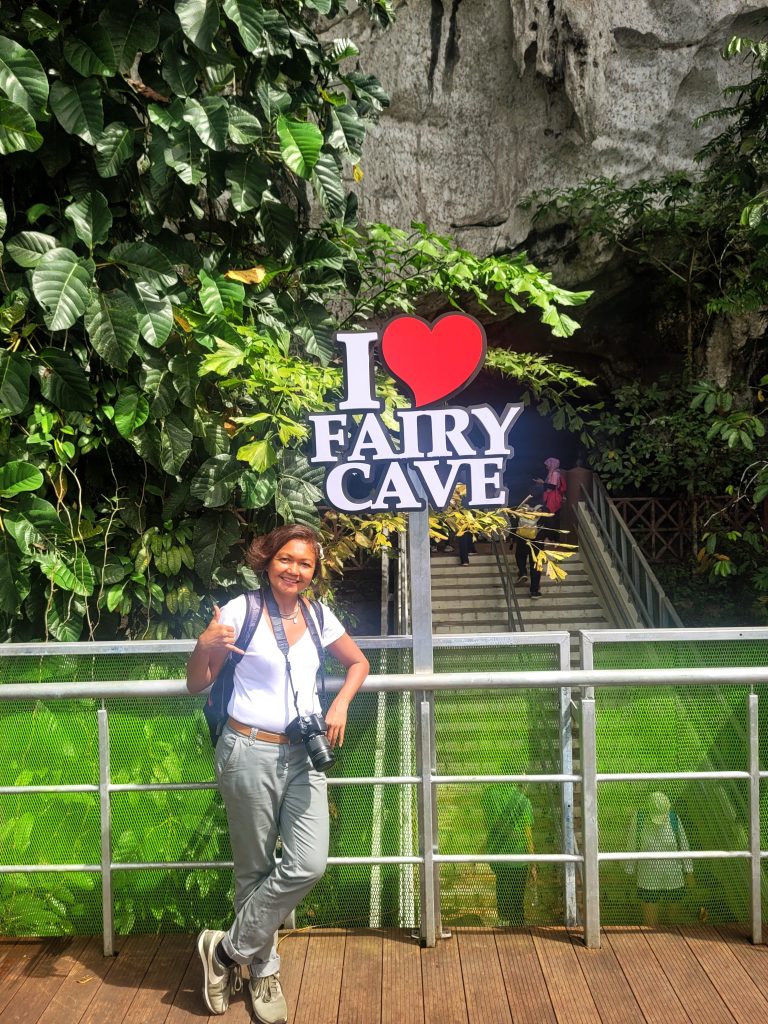
FAIRY CAVE 94000, SARAWAK
OPEN TUES-SUN 9am-4pm
PAKU ROCK MAZE GARDEN
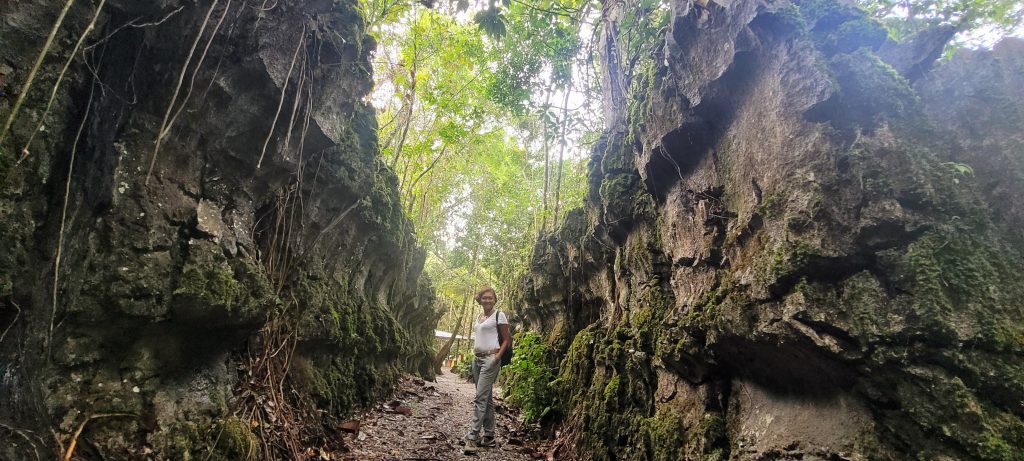
Paku Rock Maze Garden is a naturally formed stone forest behind the Chinese Shiwang Temple. This stunning tropical karst landscape is part of the Sarawak Delta Geopark.
Think of Lara Croft finding her magic stones. With ancient tree roots emerging around the primitive karst forest, the surroundings of Paku Rock Maze Garden somehow resembles the scene from Tomb Raider!
This site, open to the public only in 2021 is definitely worth visiting.
Free entrance.
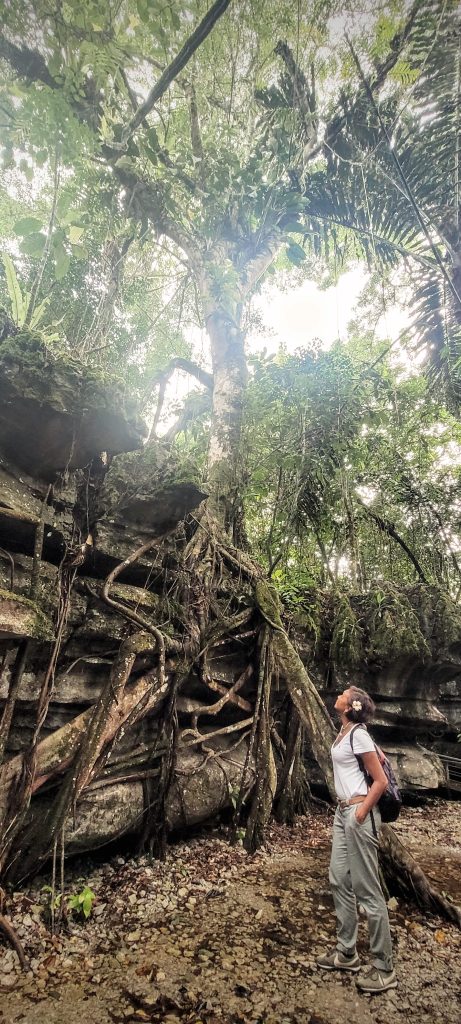
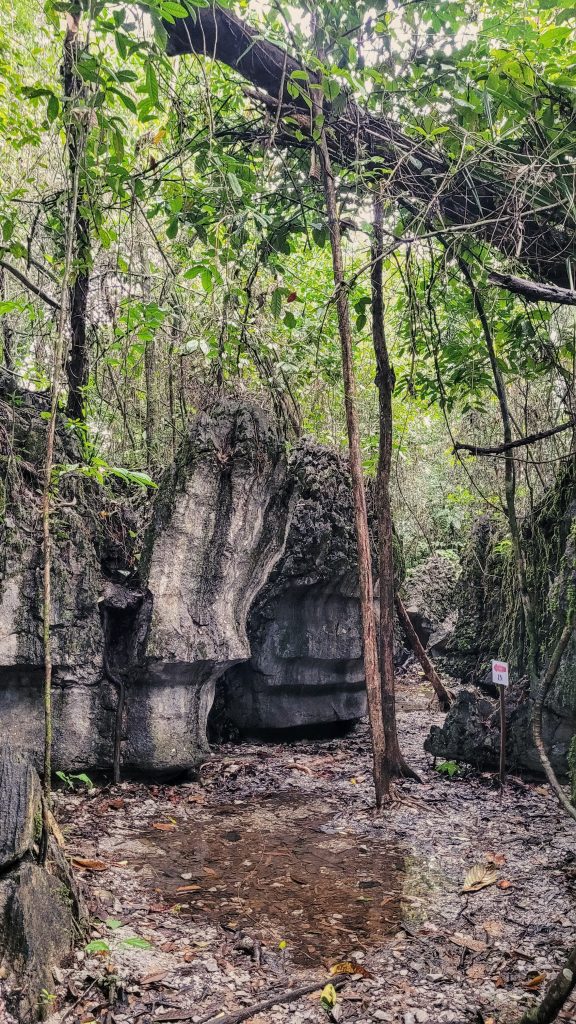
PAKU ROCK MAZE GARDEN, 94000, BAU, SARAWAK
+60 13 8139784
TASIK BIRU
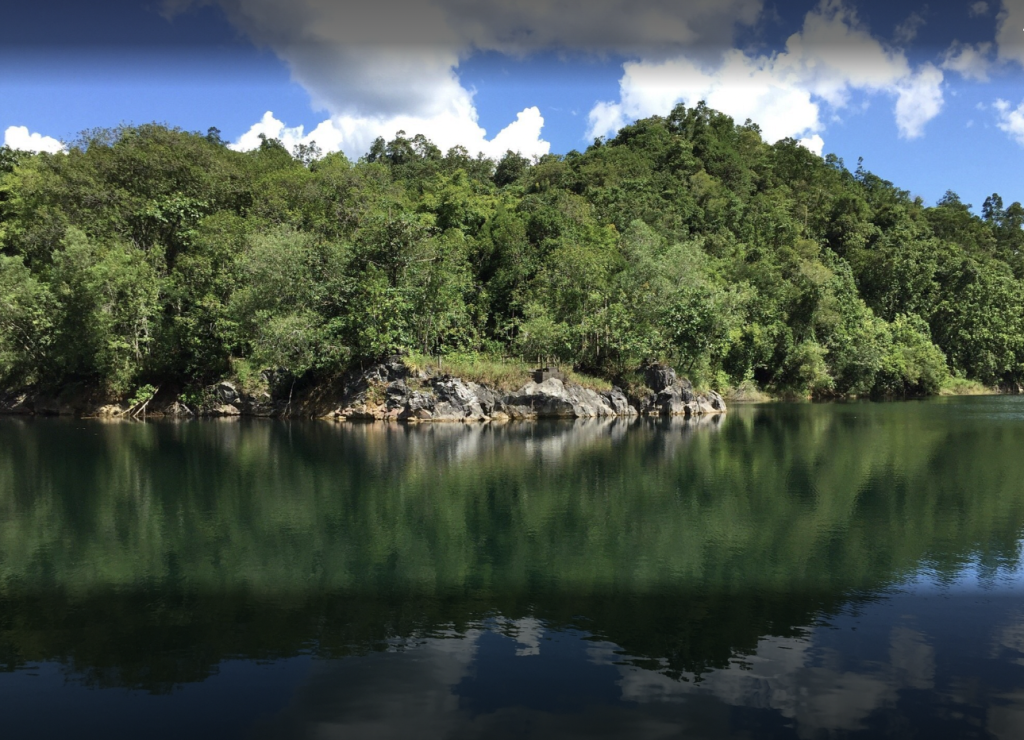
Tasik Biru, located in the heart of Bau is a manmade lake. This lake, 200 years ago was a gold mining haven for the Hakka Chinese.
It was pouring rain when I was there. The lake however was still stunning despite the heavy downpour. The beauty of nature can never be doubted in any kind of weather conditions.
I took a boat ride across the lake as soon as the rain stopped. It was a pleasant ride with beautiful reflections in the water.
Tasik Biru is open to public with various water actvities like Kayaking, paddle boat and a boat trip around the lake
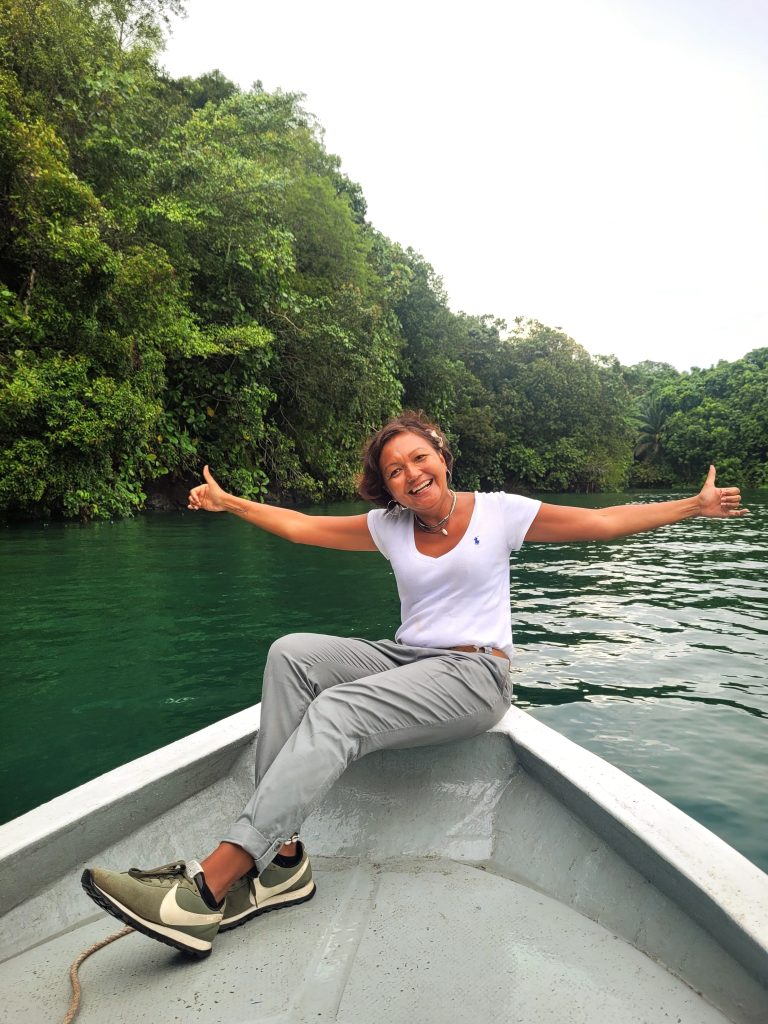
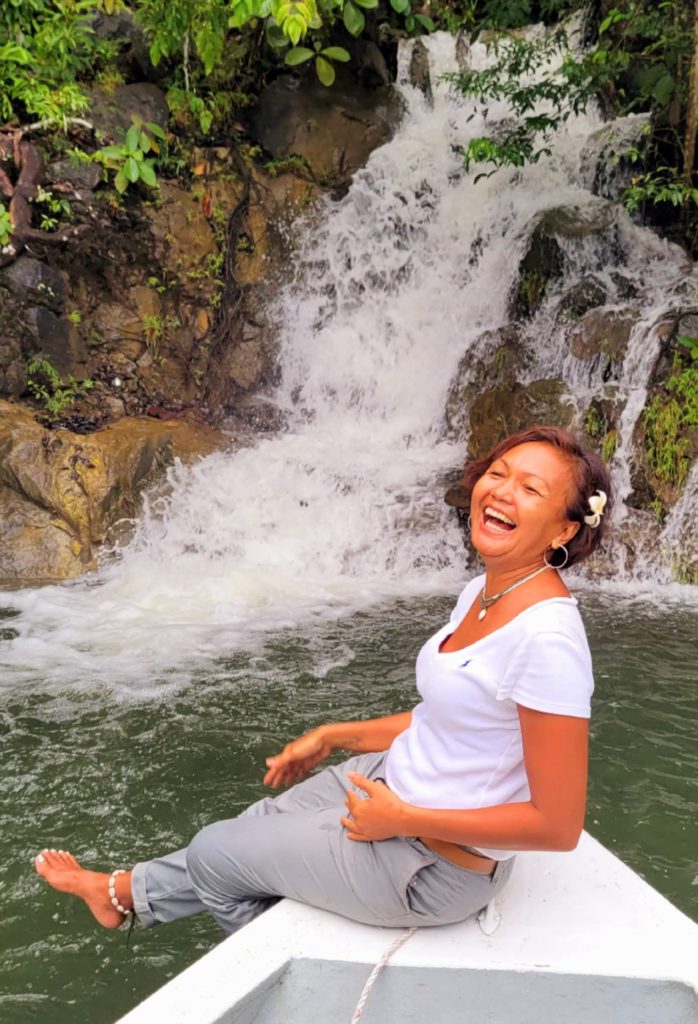
RM10 for the water activities and you may walk across the suspension bridge to the other end of the lake.
Please take note that due to the arsenic content of the water from the gold-mining over the years, visitors are advised not to fish, swim or even drink the water from this lake. I know the colour of the water is so inviting, but, do not attempt to swim in it!
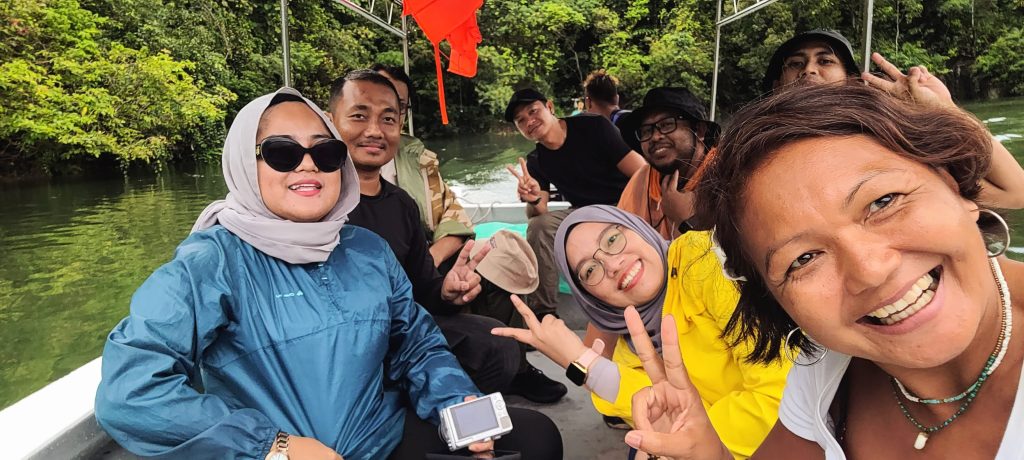
TICKET COUNTER OPERATING HOURS
MON-FRI 10am-6pm
SAT-SUN 9am-6pm
SARAWAK CULTURAL VILLAGE
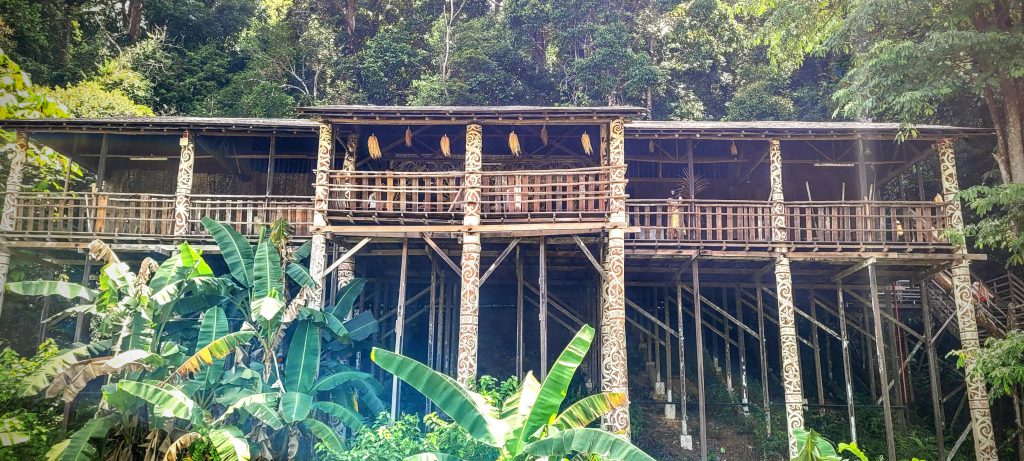
Have you heard of the term a living museum? A museum where you meet real tribes, dressed in their real tribal costumes, living in their real homes, cooking real food you can eat and using real artefacts passed down from their ancestors?
Yes, this exists and you can experience the tribal way of life in Sarawak Cultural Village, merely an hour outside the city of Kuching. A visit to Kuching is incomplete without a trip to Sarawak Cultural Village.
You can have an up close and personal experience of Sarawak’s diverse culture at this unique award winning living museum.
Walk through this 17 acre land and take your time admiring the beauty of real sized homes of the major ethnic groups of Sarawak, mainly Iban, Bidayuh, Melanau, Orang Ulu, Malay and Chinese. Have a chat with the friendly hosts of these homes. They will passionately take you through a journey of their rituals and cultures.
Pick up the drum sticks at the Iban home and learn how to beat the drums to tribal music. I had so much fun doing so that I sent the tribal drummer, Louis, for a lunch break! LOL!
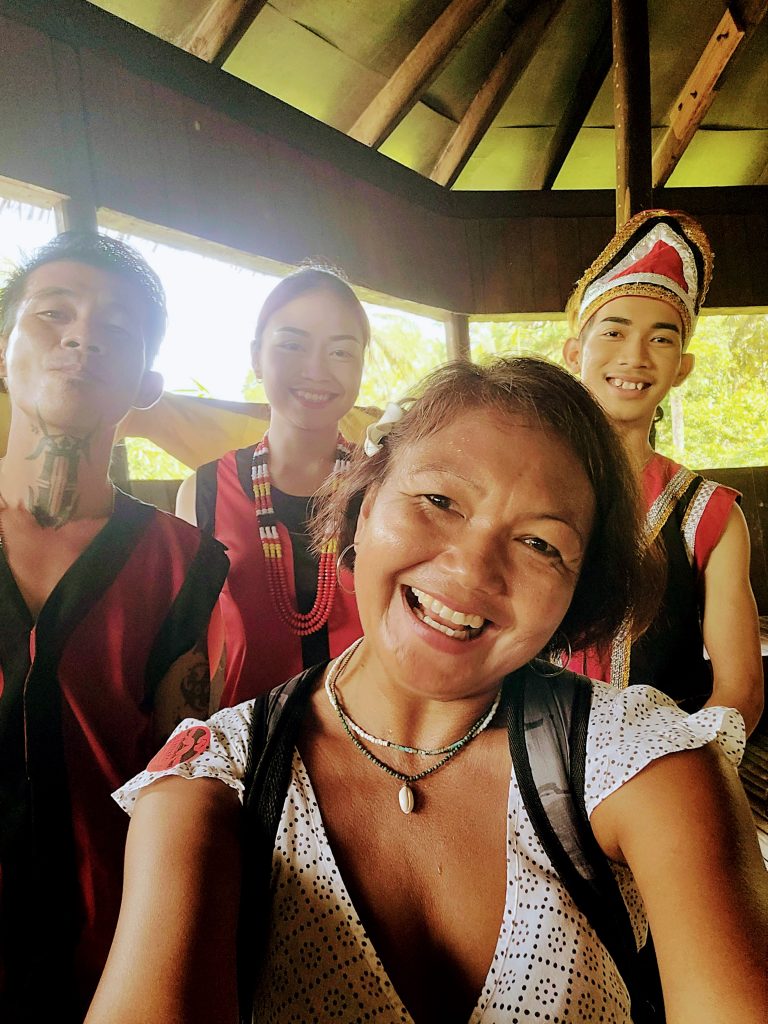
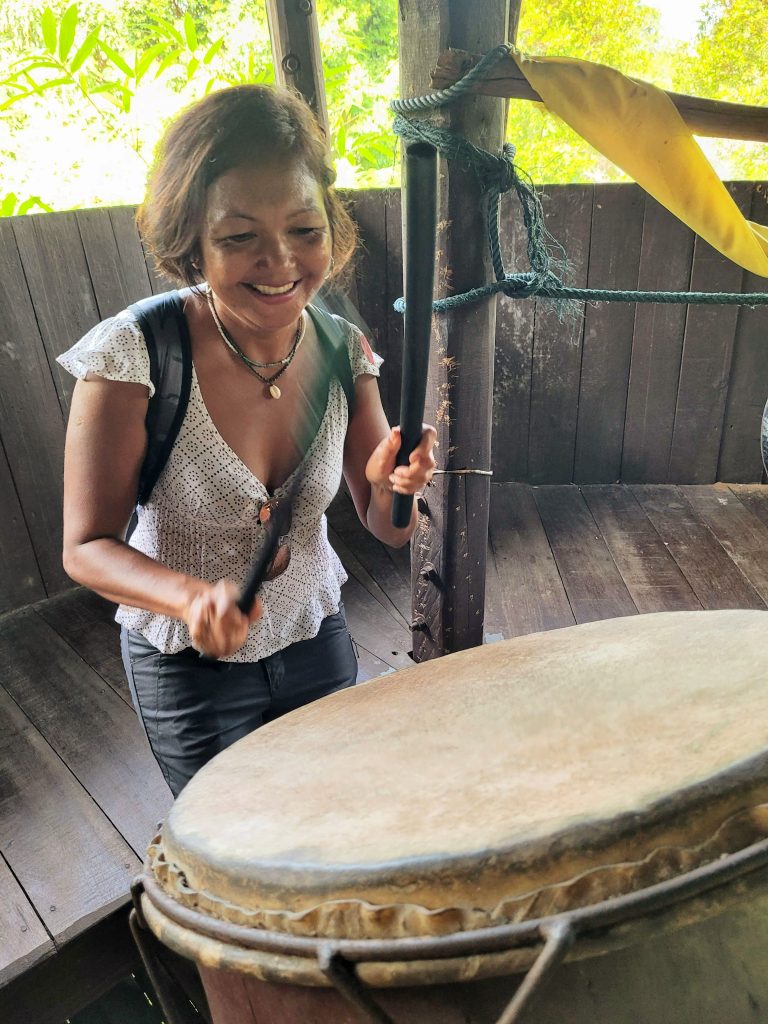
Learn the steps of Bamboo dance at Melanau house. Talk to the Ibans about their headhunting rituals. Have a go at the blow-pipes. Learn how to make Malay love letters using traditional cast iron mould cooked on a charcoal fire. I promise, a day out at The Sarawak Village will blow your mind!
Last but not least, do not miss the Culture Show at 11.30am and 4pm daily. It was fabulous and I even went on stage to dance!
Put this on your bucket list and thank me later!
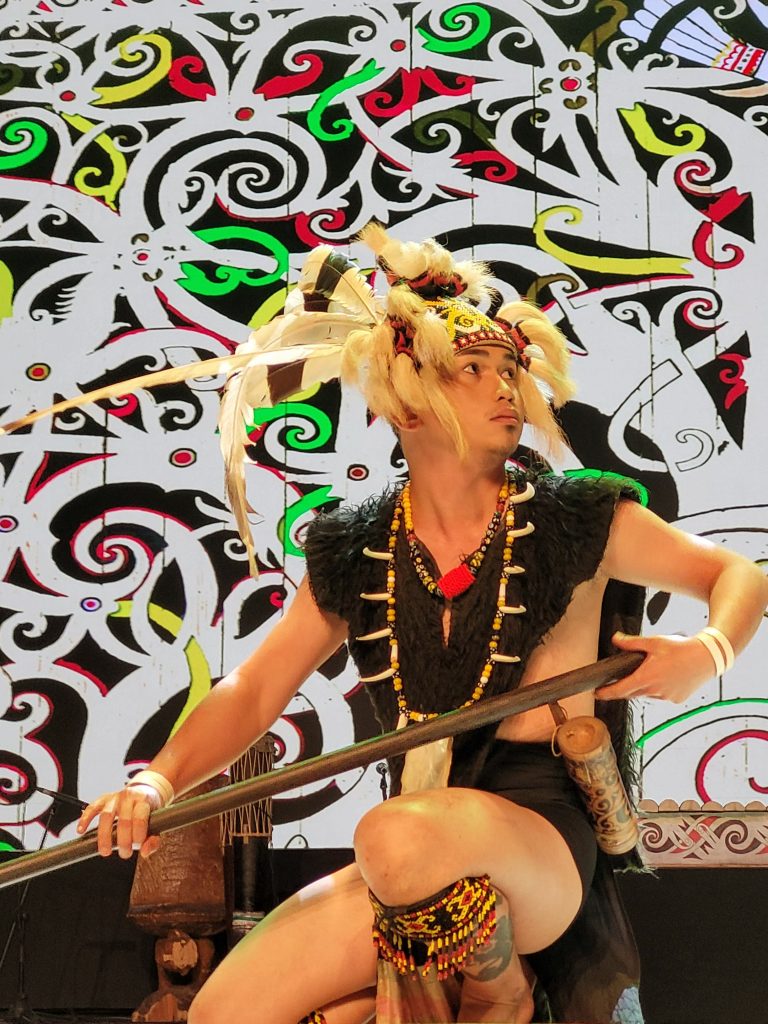
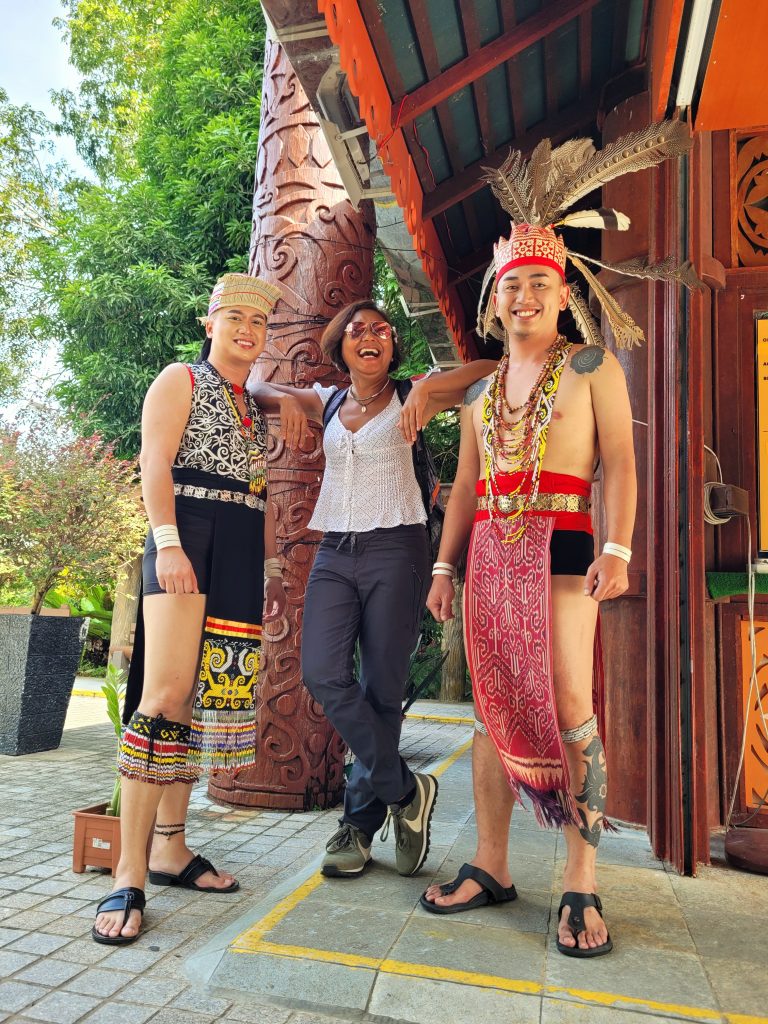
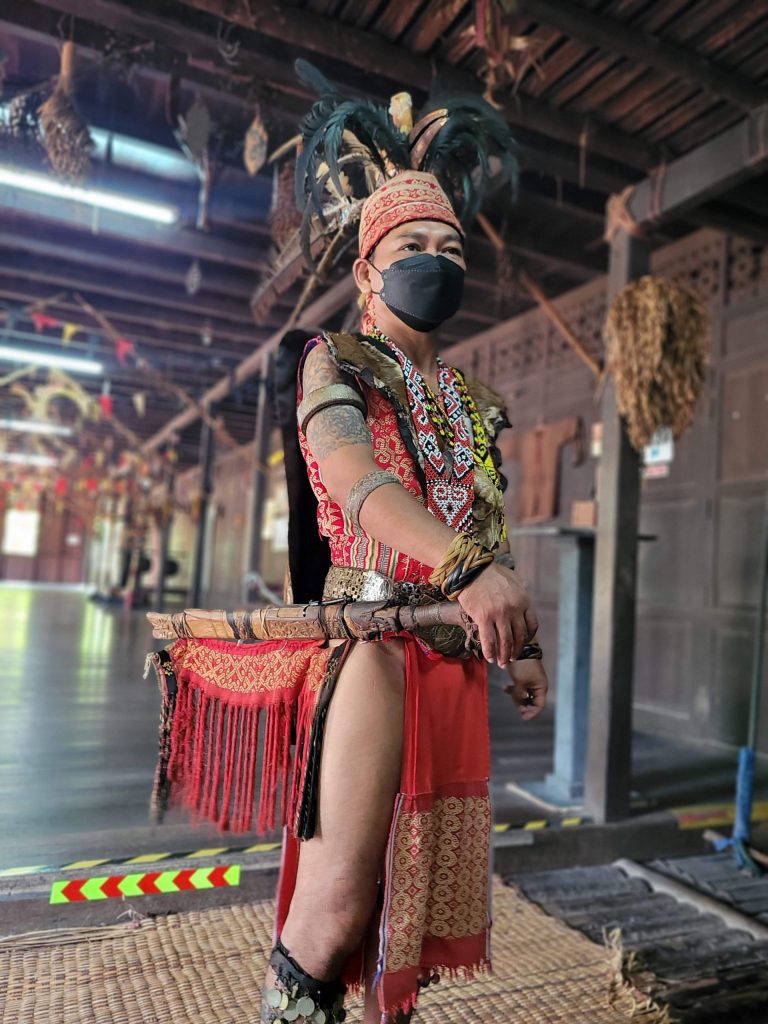
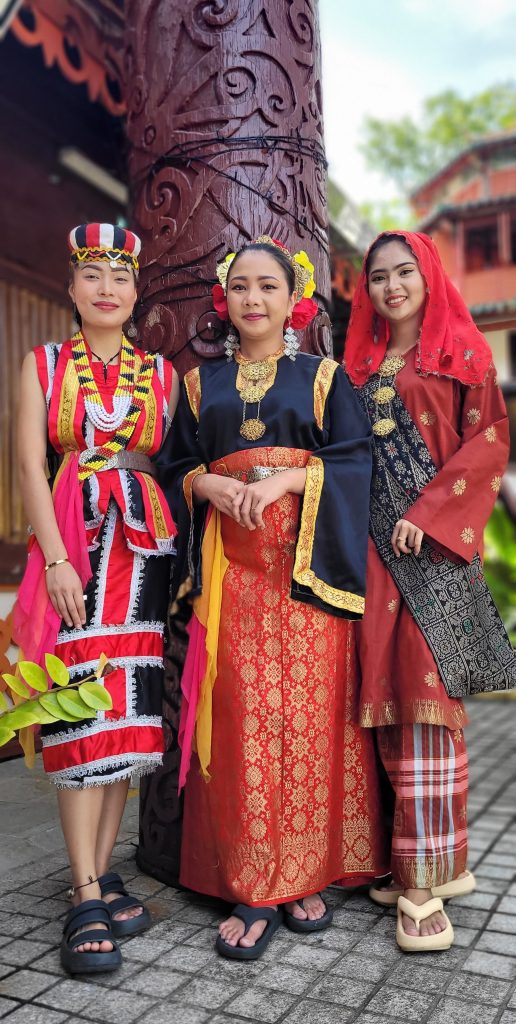
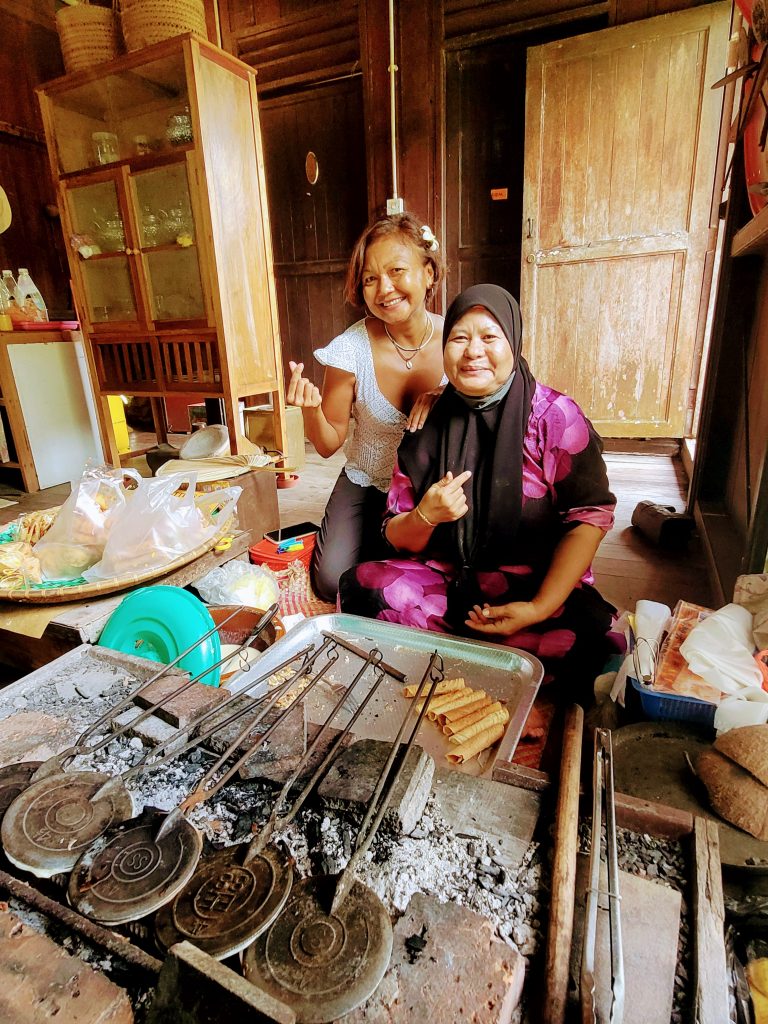
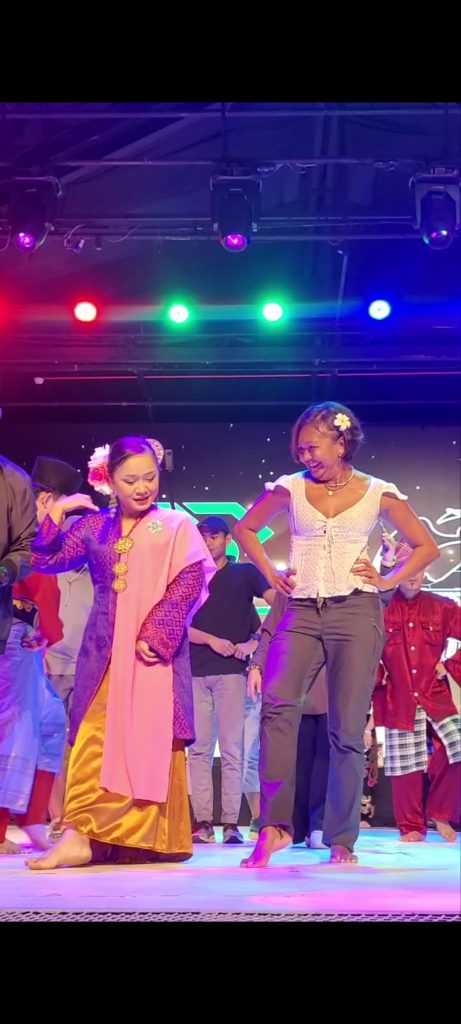
Check out their extensive website HERE
SARAWAK CULTURAL VILLAGE
Pantai Damai, Santubong, 93752 Kuching
OPEN ALL WEEK 9am-5pm
+60 (0) 82 846108
BORNEO CULTURES MUSEUM
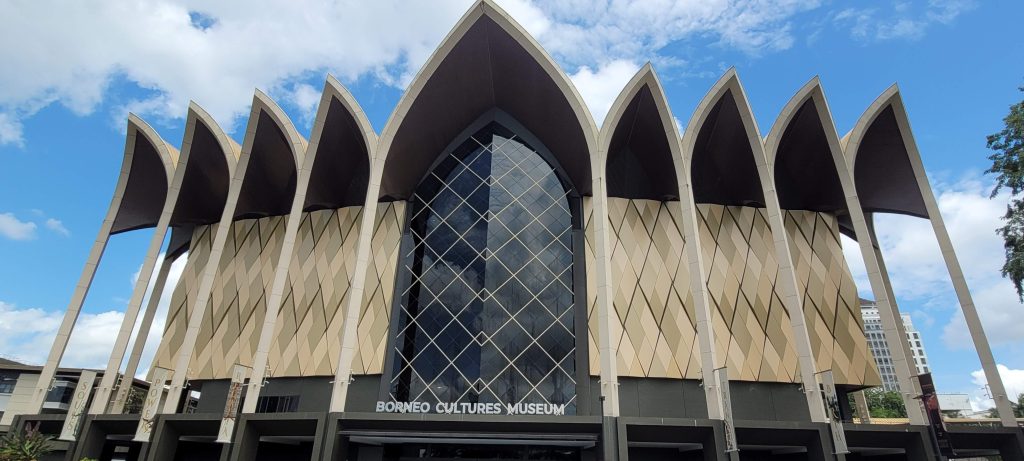
An iconic building, a brand new landmark for the city of Kuching, a visit to this museum building is not to be missed when in Kuching.
Borneo Cultures Museum is an eye-catching building that showcases Sarawak’s unique heritage and traditions. I must confess, this museum is equally impressive as the world class museums that I have been to in Mexico City and in Egypt.
This massive 5 storey museum will take you on an incredible journey through time from Sarawak prehistoric era to modern days. The modern interactive and multisensory experiences will enchant every visitor to this largest museum in South East Asia.
From dances to rituals, craftsmanship and music to the captivating stories of head-hunter, traditional burial and Rajah Brooke administration; you will leave with refreshing travel tales to remember.
The Third Floor, which is also the main gallery, is my favourite exhibition room. I love how it feels like I’ve embarked on a river journey learning about Puteri Santubong, the burial ritual of the Orang Ulu and witnessing the incredible burial poles carved with ancient designs.
Do not miss Level Five where ‘Objects of Desire’ gallery enchants you with skilled craftsmanship and artistic artefacts.
What I find most interesting is that objects found in this museum aren’t always collected but sometimes given to the museum by the owner’s descendants. Some of these objects are regarded as sacred, carrying spirits and energy, therefore, with due respect, the Sarawak Cultures Museum conducts special rituals with the help of ritual specialists or even a shaman.
Please take note that flash photography isn’t allowed. The lighting of this museum is cleverly designed to suit mobile phone photography and digital SLR cameras.
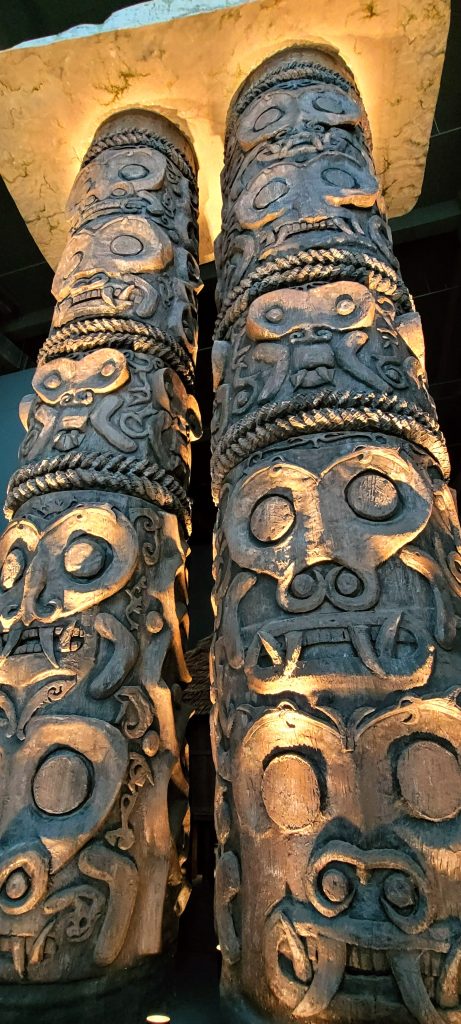
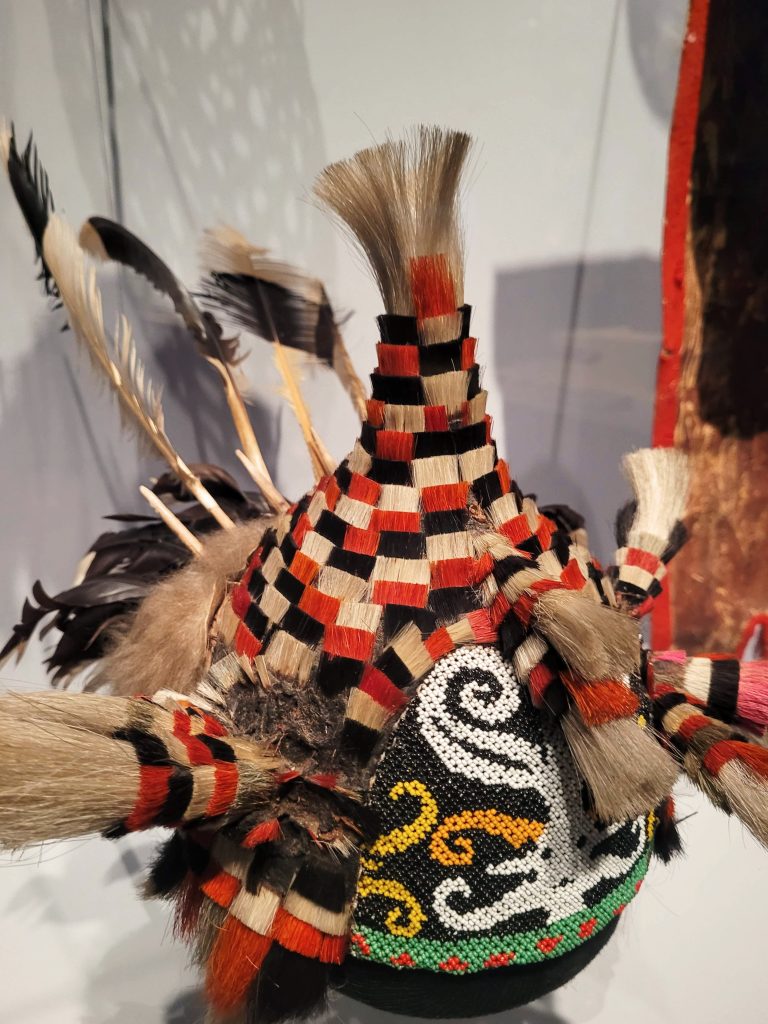
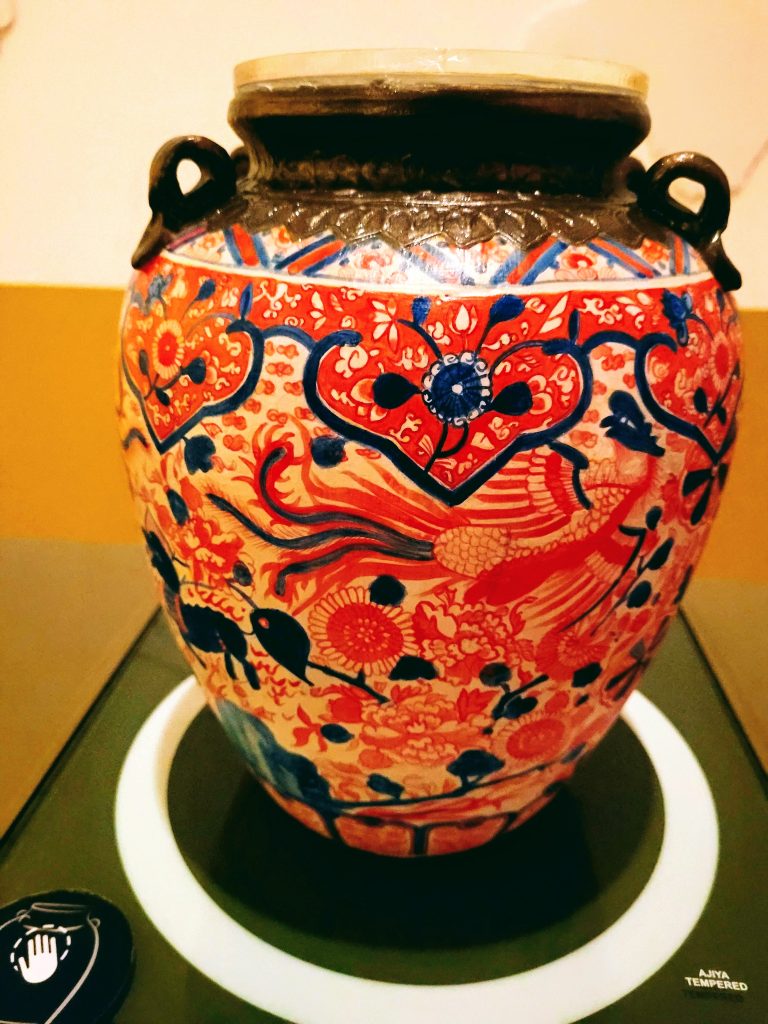
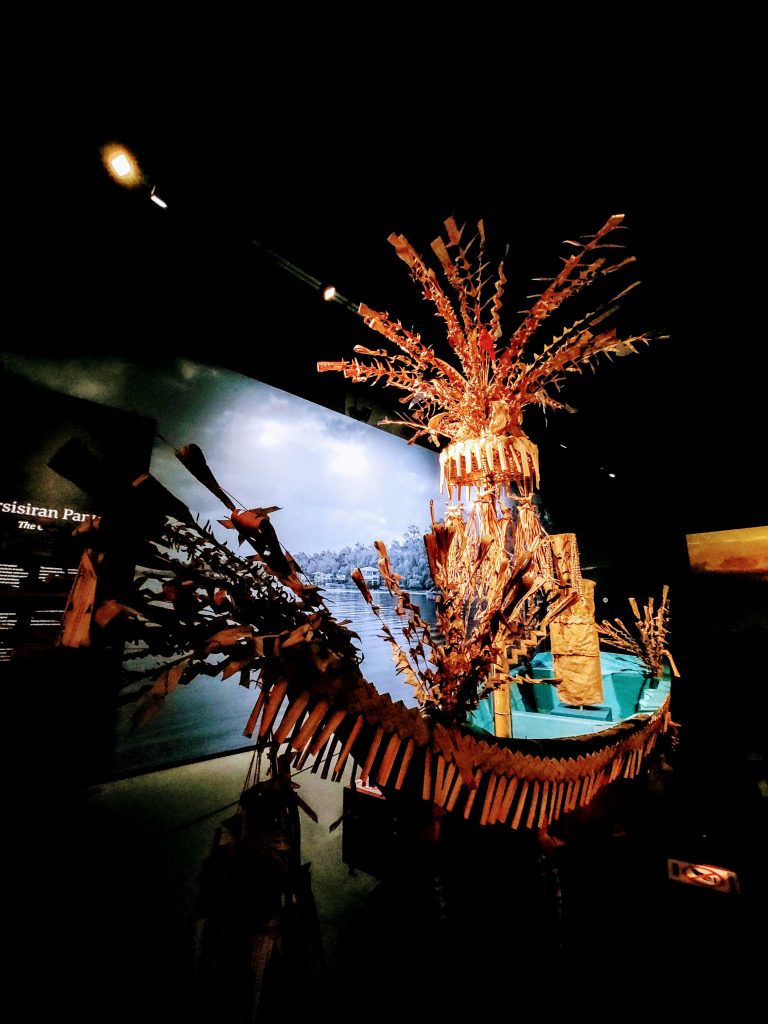
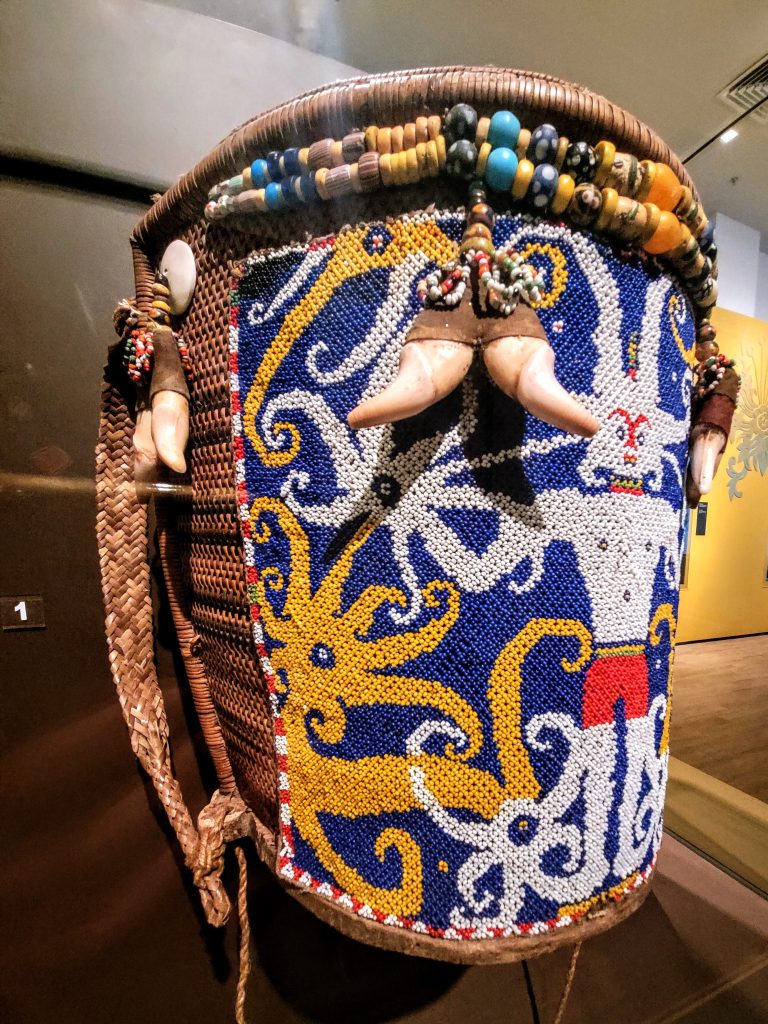
OPENING HOURS
MON- FRI 9am-4.45pm
SAT, SUN AND PUBLIC HOLIDAY : 9.30am-4.30pm
For info on entrance fee and latest exhibition please visit Sarawak Cultures Museum official website HERE
CREDITS
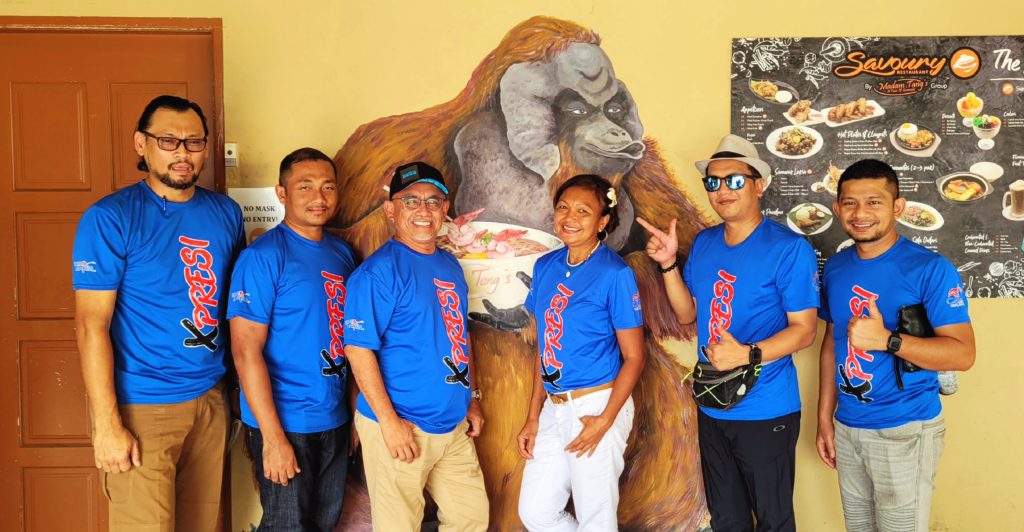
A big shoutout and a very special thank you from the bottom of my heart to the Tourism Malaysia team for their hard work and incredible effort making this trip exploring the new attractions in Sarawak and the current ones so memorable.
Sarawak certainly has so much more to be discovered!
If you enjoyed reading my article head over my instagram page HERE for more travel tales.
